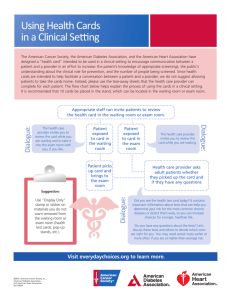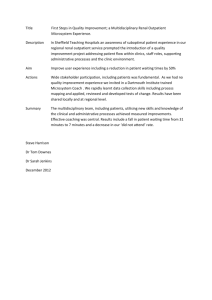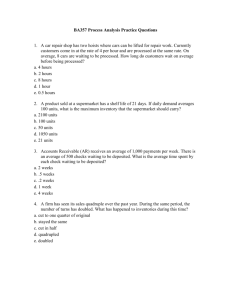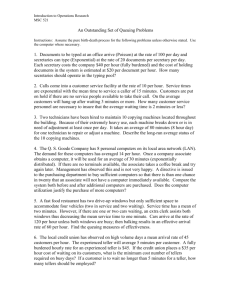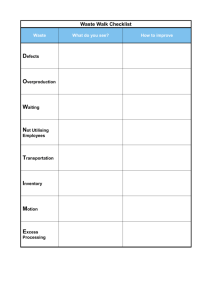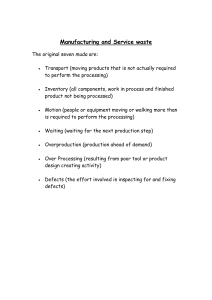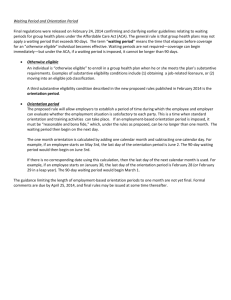Patient/Family Waiting Room Analysis For Susquehanna Health's
advertisement
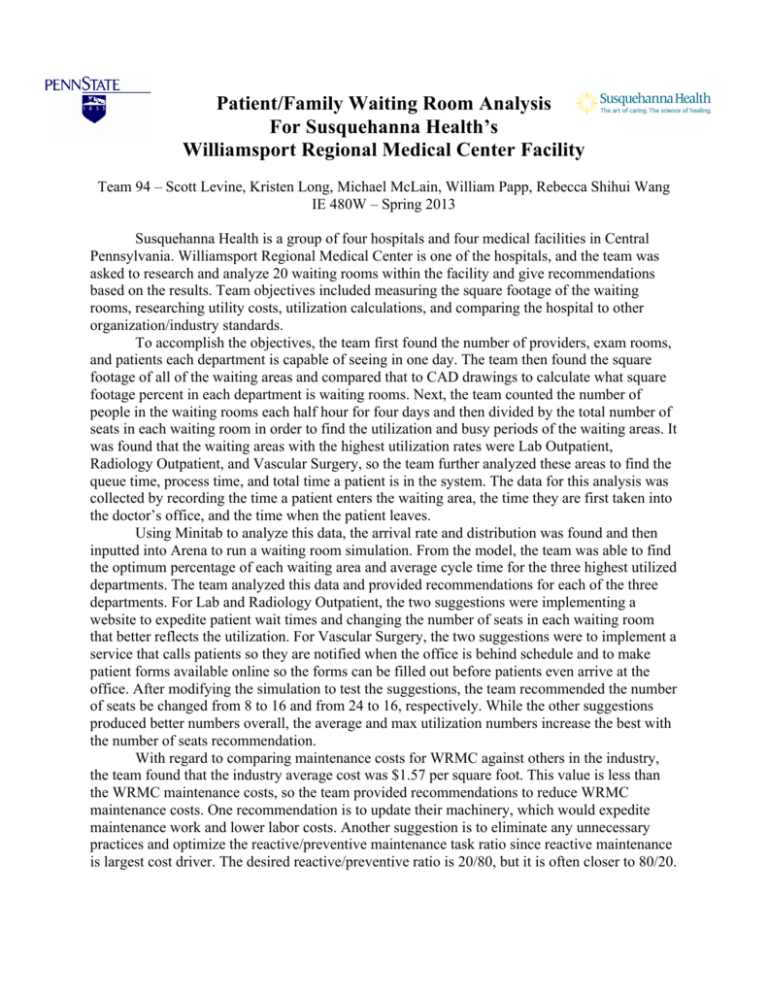
Patient/Family Waiting Room Analysis For Susquehanna Health’s Williamsport Regional Medical Center Facility Team 94 – Scott Levine, Kristen Long, Michael McLain, William Papp, Rebecca Shihui Wang IE 480W – Spring 2013 Susquehanna Health is a group of four hospitals and four medical facilities in Central Pennsylvania. Williamsport Regional Medical Center is one of the hospitals, and the team was asked to research and analyze 20 waiting rooms within the facility and give recommendations based on the results. Team objectives included measuring the square footage of the waiting rooms, researching utility costs, utilization calculations, and comparing the hospital to other organization/industry standards. To accomplish the objectives, the team first found the number of providers, exam rooms, and patients each department is capable of seeing in one day. The team then found the square footage of all of the waiting areas and compared that to CAD drawings to calculate what square footage percent in each department is waiting rooms. Next, the team counted the number of people in the waiting rooms each half hour for four days and then divided by the total number of seats in each waiting room in order to find the utilization and busy periods of the waiting areas. It was found that the waiting areas with the highest utilization rates were Lab Outpatient, Radiology Outpatient, and Vascular Surgery, so the team further analyzed these areas to find the queue time, process time, and total time a patient is in the system. The data for this analysis was collected by recording the time a patient enters the waiting area, the time they are first taken into the doctor’s office, and the time when the patient leaves. Using Minitab to analyze this data, the arrival rate and distribution was found and then inputted into Arena to run a waiting room simulation. From the model, the team was able to find the optimum percentage of each waiting area and average cycle time for the three highest utilized departments. The team analyzed this data and provided recommendations for each of the three departments. For Lab and Radiology Outpatient, the two suggestions were implementing a website to expedite patient wait times and changing the number of seats in each waiting room that better reflects the utilization. For Vascular Surgery, the two suggestions were to implement a service that calls patients so they are notified when the office is behind schedule and to make patient forms available online so the forms can be filled out before patients even arrive at the office. After modifying the simulation to test the suggestions, the team recommended the number of seats be changed from 8 to 16 and from 24 to 16, respectively. While the other suggestions produced better numbers overall, the average and max utilization numbers increase the best with the number of seats recommendation. With regard to comparing maintenance costs for WRMC against others in the industry, the team found that the industry average cost was $1.57 per square foot. This value is less than the WRMC maintenance costs, so the team provided recommendations to reduce WRMC maintenance costs. One recommendation is to update their machinery, which would expedite maintenance work and lower labor costs. Another suggestion is to eliminate any unnecessary practices and optimize the reactive/preventive maintenance task ratio since reactive maintenance is largest cost driver. The desired reactive/preventive ratio is 20/80, but it is often closer to 80/20.
